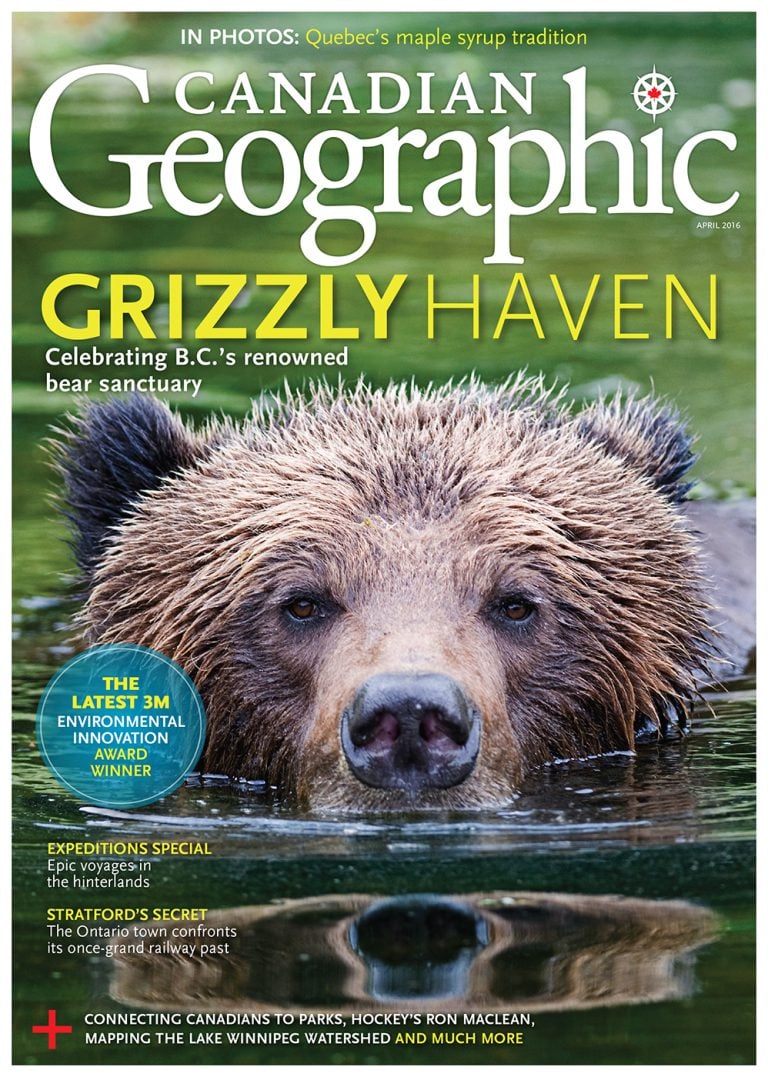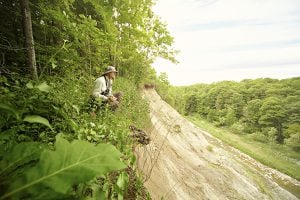
People & Culture
Kahkiihtwaam ee-pee-kiiweehtataahk: Bringing it back home again
The story of how a critically endangered Indigenous language can be saved
- 6310 words
- 26 minutes
This article is over 5 years old and may contain outdated information.
People & Culture

Annik Shamlian is a member of Les Chemins de l’Or Bleu/The Blue Gold Paths, a historic canoe camping expedition which saw six pilgrims paddle through 7,000 kilometres of Canada’s waters.
“The channel is frozen, you cannot go any further.”
The words we did not want to hear resonated in our ears. We were 100 kilometers from our planned point of arrival (Inuvik), and Mother Nature had put her foot down. Our 175-day paddle across Canada was over. After six months of discovery, introspection, and physical challenges, we were going home.
Our emotions ranged from elation to frustration, and we weren’t sure how to handle them. When we had woken up that morning, we did not expect such an abrupt end. Yet, there it was—our trip was over. We looked at each other and hugged.
On the first leg of our return trip, the plane retraces part of our journey from the Great Slave Lake to Inuvik, covering a distance it took us nineteen days to paddle in only two short hours.
But we’d reached Inuvik at last! Not the way we wanted to get there, by pick-up, but we’d arrived! Approximately 3000 people live there on the shores of the MacKenzie river’s East (and frozen) Channel. The streets were busier with stores, buildings and people than in the small community of Tsigehtchic where we’d spent our previous six days, and it helped to prepare us for our return home.
We are now back with our loved ones. Now, there is no need for a fire; we use the stove to cook our meal, and have machines to dry our clothes. It does feel a bit strange to not have to look for wood, or huddle together for warmth.
For six months we’d had a routine, and now we’ve left it behind. Do we miss it? Certainly there’s a part of ourselves that wants to be back out there, in the bush, where we only had to worry about feeding and sheltering the six of us. The other part of us is happy to be back, to see admiration in everyone’s eyes and be proud of what we have accomplished. It’s starting to sink in that when we wake up in the A.M. we will not make our morning fire, heat our water, warm our fingers and paddle on. Our bodies, previously always busy doing something, are now idle and, although a little fidgety, can now relax.
We are now entering a reflective part of our journey, settling down into our ‘old’ life, preparing new projects, goals and challenges, and looking ahead.
We have often been asked: “how are you dealing with your return to “normal” life?” The answer is that each person is different. Some will pass a grieving process, others a bit of a depression and some simply just move on. We are tired—we realized this once we’d stopped—and we are going to need rest. This implies some ‘sofa’ time, which we are not used to anymore! It’s difficult to stop moving, our bodies demand it.
Some have a lack of motivation or procrastinate on things that have to be done in order to resume life. Simple things like taking the subway or going to Costco need some getting adjusted to. We have to re-adapt our routine, keep moving, but at a different pace. It also helps to take a day and go somewhere on a day trip, pack a bag and change scenery, plan some activities and reconnect with friends. Integrating things like some of the foods we used during our trip, into our daily life, can help with the transition as well, diminishing the nostalgia of missing one thing or another. Some of us also wear our old (but now clean) expedition clothes at home or while doing some outdoor activity, liking the comfort of our used garments. There is no secret recipe to deal with such an extensive change in one’s life. You just have to take one day at a time, get outside, walk, stop and breathe.
Our trip has invariably brought us so much, and we have grown, learned and become stronger and better individuals. Ultimately, it’s now our turn to share our experience and hopefully motivate others to follow their dreams.
Are you passionate about Canadian geography?
You can support Canadian Geographic in 3 ways:

This story is from the April 2016 Issue

People & Culture
The story of how a critically endangered Indigenous language can be saved

Science & Tech
Celebrating Canadian Innovation Week 2023 by spotlighting the people and organizations designing a better future

Places
In Banff National Park, Alberta, as in protected areas across the country, managers find it difficult to balance the desire of people to experience wilderness with an imperative to conserve it

Places
It’s an ambitious plan: take the traditional Parks Canada wilderness concept and plunk it in the country’s largest city. But can Toronto’s Rouge National Urban Park help balance city life with wildlife?